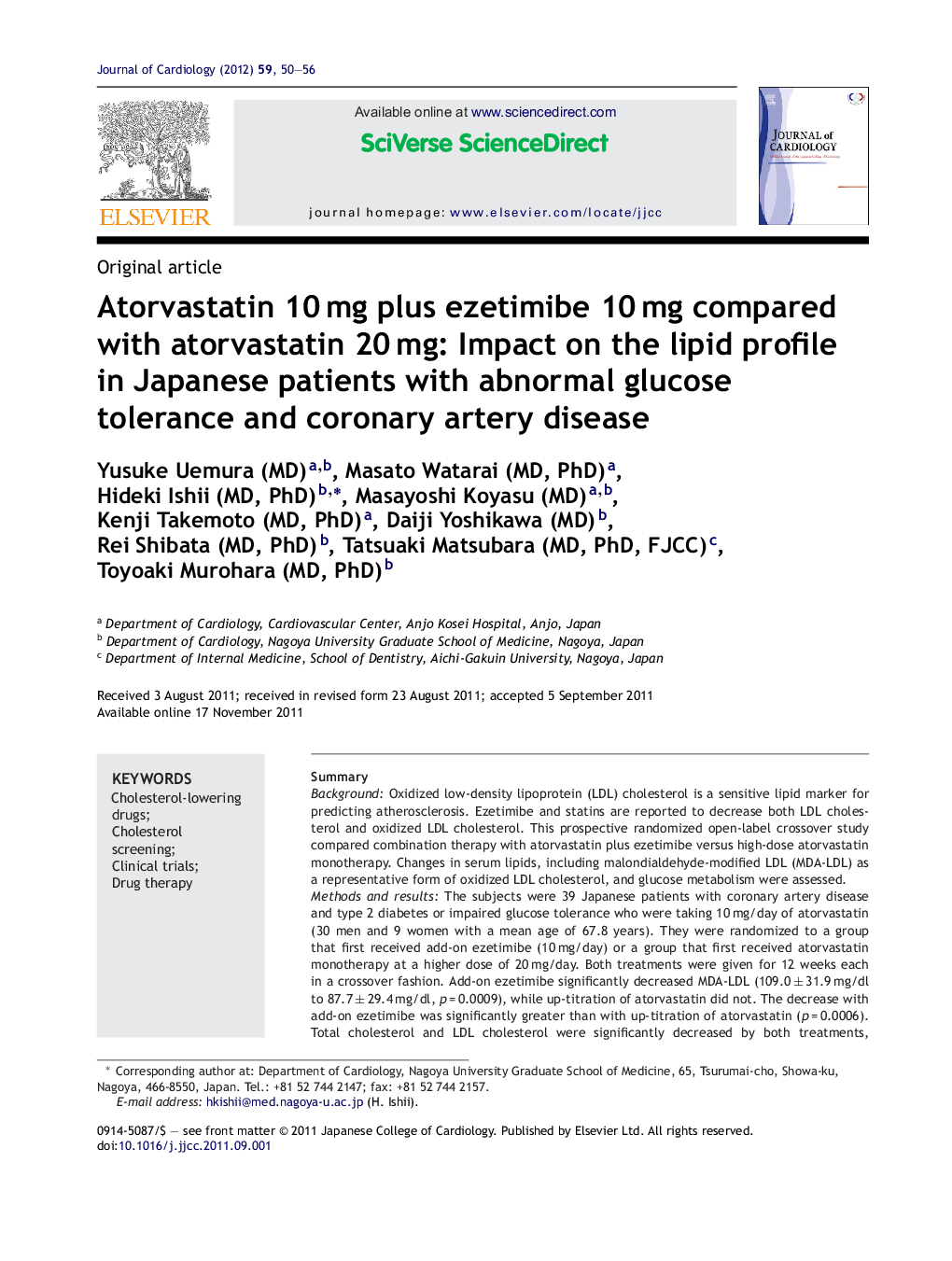| Article ID | Journal | Published Year | Pages | File Type |
|---|---|---|---|---|
| 2963168 | Journal of Cardiology | 2012 | 7 Pages |
SummaryBackgroundOxidized low-density lipoprotein (LDL) cholesterol is a sensitive lipid marker for predicting atherosclerosis. Ezetimibe and statins are reported to decrease both LDL cholesterol and oxidized LDL cholesterol. This prospective randomized open-label crossover study compared combination therapy with atorvastatin plus ezetimibe versus high-dose atorvastatin monotherapy. Changes in serum lipids, including malondialdehyde-modified LDL (MDA-LDL) as a representative form of oxidized LDL cholesterol, and glucose metabolism were assessed.Methods and resultsThe subjects were 39 Japanese patients with coronary artery disease and type 2 diabetes or impaired glucose tolerance who were taking 10 mg/day of atorvastatin (30 men and 9 women with a mean age of 67.8 years). They were randomized to a group that first received add-on ezetimibe (10 mg/day) or a group that first received atorvastatin monotherapy at a higher dose of 20 mg/day. Both treatments were given for 12 weeks each in a crossover fashion. Add-on ezetimibe significantly decreased MDA-LDL (109.0 ± 31.9 mg/dl to 87.7 ± 29.4 mg/dl, p = 0.0009), while up-titration of atorvastatin did not. The decrease with add-on ezetimibe was significantly greater than with up-titration of atorvastatin (p = 0.0006). Total cholesterol and LDL cholesterol were significantly decreased by both treatments, but the percent reduction with add-on ezetimibe was significantly greater (p < 0.05). High-density lipoprotein cholesterol was significantly increased by both treatments and there was no significant difference between them. The apolipoprotein B/apolipoprotein A-I ratio and remnant-like particle cholesterol were only significantly decreased by add-on ezetimibe. Both treatments caused similar elevation of hemoglobin A1c.ConclusionIn Japanese patients with type 2 diabetes or impaired glucose tolerance and coronary artery disease, adding ezetimibe (10 mg/day) to atorvastatin (10 mg/day) significantly improved the lipid profile compared with atorvastatin monotherapy at 20 mg/day.
